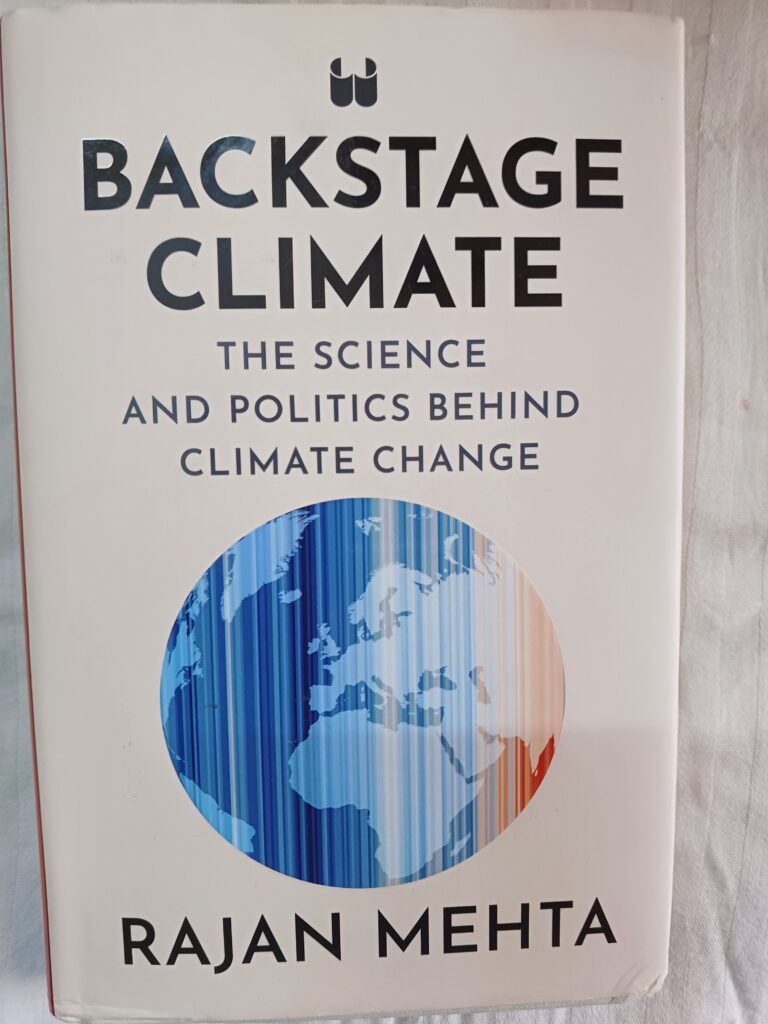Book Review by K.S.Loganathan.
Rajan Mehta learned about the recent advances in climate change at Harvard University during a sabbatical taken at the time of COVID -19. He shares his experience in this primer outlining the science and politics behind climate change. His wife Sona has provided the illustrations on some of the key issues.
World temperatures have risen by 1 – 1.5 degrees Celsius since 1850 ,coinciding with a rise in atmospheric carbon dioxide levels from 280 to 425 parts per million due to industrial activity and rising standards of living. Carbon dioxide and other greenhouse gases like methane absorb infrared radiation selectively, trapping it in the atmosphere, particularly over land areas and cause global warming. About 65 % of the temperature rise is due to the burning of fossil fuels, 20-25 % by industrial activity and 10-15 % by humans.
Global warming has led to thawing of the Arctic permafrost, melting of glaciers in the snowclad mountains and Antarctic ice shelves, and rising sea levels. Wind and ocean currents are affected, exacerbating extreme weather conditions.
Under the Paris Agreement of 2015, a target of 2 degrees C maximum ( since set at 1.5 degrees C) above pre- industrial levels is to be achieved by countries voluntarily pledging to reduce emissions, with the developed nations collectively agreeing to contribute USD 100 billion annually towards climate finance.( However it is estimated by IMF that a global investment of USD 5 trillion annually will be needed to meet the target). Climate is a shared resource that suffers from what is known as ‘ the Tragedy of the Commons’, a theory explaining the dangers when people sharing a limited resource act in their own self- interest, though it may cause collective harm. Climate Justice requires common and differentiated responsibility of nations ; at the same time , individual and group responsibilities must be coordinated to achieve results. In most discussions on climate change, the need to reduce consumption is not explicitly discussed. In this book , the author touches upon the subject and discusses specific actions that governments and organisations, industries and individuals must take to achieve net zero carbon emissions by 2050 .
To achieve net zero carbon emissions, energy transition to renewables , industrial decarbonisation ( especially for cement and steel) , shift to electric vehicles, carbon capture and reforestation are some of the major initiatives . A Circular Economy- one where we take,make, use, reuse, refurbish, repurpose ,remanufacture and recycle everything is a sustainable model.By reducing the use of virgin materials in manufacturing, material and energy savings improve, while pollution decreases. However in the case of manufactured goods, the present status is far from the ideal.
The book is written for the layman but it also includes 138 references for further reading .It is an useful addition to climate literature. A glossary of terms and abbreviations and an index should be added in future editions .

Thanks to the author for arranging for the physical copy of the book from Delhi although he was overseas at the time.
Review requested by the author.











